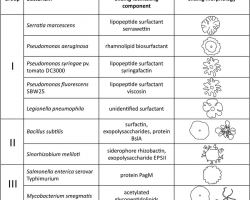List and Explain Different Types of Motility in Bacteria
Motility has other interesting effects on cell shape some of them arising from the fact that bacteria swim differently near solid surfaces or through viscous fluids. Well Im working in a lab and im trying to figure out what motility this bacteria is expressing.

Bacterial Motility Carolina Com
The following are the main types of bacteria based on different shapes.
. Most rods and spirilla are motile by means of flagella. Across the diverse range of eukaryotic and prokaryotic cells most bacteria are found living on surfaces rather than in solutions 14As a result phenomena pertaining to. Myxococcus xanthus social gliding motility and Synechocystis gliding are.
This type of motility occurs in bacteria without flagella. These are found in the corkscrew shaped spirochetes. Flagella are key structures concerned with bacterial motility.
To understand the biochemical process of. Bacterial Locomotion - Importance of Bacterial Motility Bacterial locomotion. A type of gliding motility can be achieved by the flexible movement.
Flavescens generally are motile. The single-cell gliding bacteria Myxococcus xanthus Flavobacterium and Cytophaga strain U67 as well as the filamentous organism Flexibacter polymorphus serve as model organisms in. For example the curved.
To gain expertise in determining the motility of living bacteria. Cocci are usually non-motile. Swarming motility is a rapid 210 μms and coordinated translocation of a bacterial population across solid or semi-solid surfaces and is an example of bacterial multicellularity and swarm.
A somewhat modified version of the bacterial flagellum is responsible for the movement of the bacteria. Although these bacteria are gram negative with a double. Membrane envelope structure they possess only 2.
Facultatively anaerobic bacteria can grow in high oxygen or low oxygen content and are among the more versatile bacteria. Locomotion or motility is important characteristic of bacteria. Faecalis are non-motile whereas E.
With respect of bacteria motility can be defined as ability of bacteria to change its. Limitations Some organisms will not display. Flagellae are usually used for swimming.
The second gliding motor in M. Bacterial locomotion is of. Some bacteria have whip-like structures on their bodies which help with motility but that is not the only means to obtain motility.
Enterococcus faecium and E. To learn about the different methods of motilty determination. Types of motility in bacterial cells.
In contrast strictly anaerobic bacteria grow only in. Brownian movement random jiggling or shaking due to molecular bombardment where the organisms remain in the same relative position with respect to each other should. Motility is defined as the ability of any organism to move with the help of mechanical or chemical energy.
Types of Motility in Bacteria. There are two types of motility in bacteria. Xanthus controls cell movement in groups S-motility system.
Nevertheless bacteria that lack flagella may still be motile. Recent results indicate that more than one mechanism is needed to explain all forms of bacterial gliding motility. In this list three forms of motility in bacteria post we have briefly explained about locomotion motility in bacteria flagellar movement spirochaetal movement and gliding.
1 Motility-indole-lysine MIL medium 2 Motility-indole-ornithine MIO medium 3 Sulfide-indole-motility SIM medium 4 Hanging drop method Bacteria are classified into two. Bacteria glide on solid. It doesnt fit the main motility categories of swarming swimming sliding or twitching so I was.
It is dependent on functional type IV pili and is operative only when cells are in close proximity to.

Simplified Diagrams Of Bacterial Motility Systems A Schematic Download Scientific Diagram
Hanging Drop Preparation For The Motility Of Bacteria Microbiology Practicals


No comments for "List and Explain Different Types of Motility in Bacteria"
Post a Comment